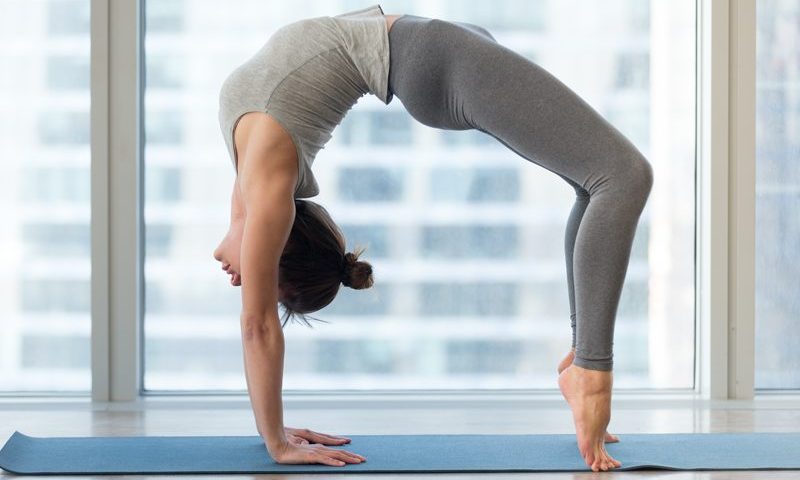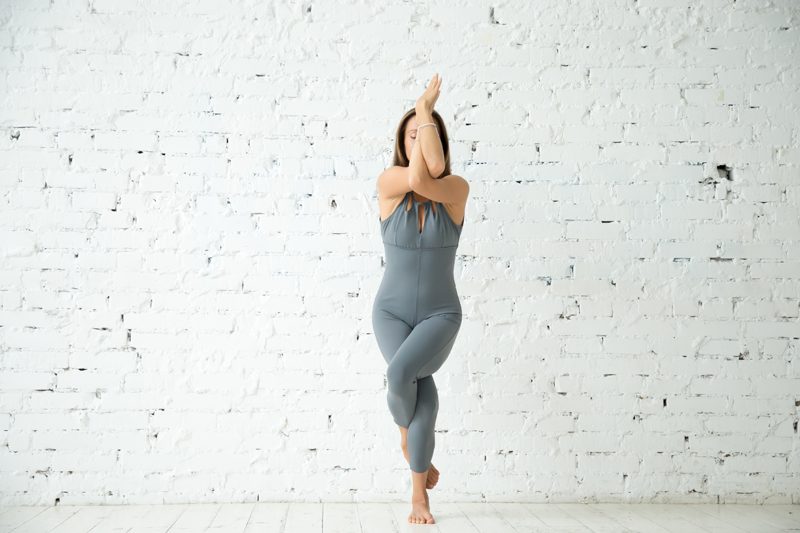
The Benefits of Yoga Inversion
April 4, 2019
The Benefits of Essential Oils
April 19, 2019Yoga for the Upper Body

Yoga can benefit all areas of the body. However, sometimes we want to concentrate on one area in particular, for instance, the upper body. In this case, it’s best to use postures that target that region. Whether you want to increase strength in your upper body or release built-up tension, your goal can be achieved through regular practice. Below, we explore yoga for the upper body in more detail. With summer fast approaching, you may want to practice outside. If you do, remember to wear a yoga cap to stay protected.
Downward Dog
Downward Dog is one of the most popular yoga poses of all time. Not only does the pose strengthen the arms and shoulders, but it also stretches them to release tension. Additionally, the asana energises the body, improves digestion, and relieves stress.
To practice Downward Dog, begin on your hands and knees. To maintain correct alignment, make sure that your shoulders are over your wrists and your hips are over your knees. As you exhale, tuck your toes under and slowly straighten your legs. As your legs straighten, lift your bottom towards the ceiling and press your feet into the mat. Engage your thighs and firm your outer arms by drawing them inward. Broaden your shoulder blades and rest your head between your arms. You are in Downward Dog. Hold the posture for around 30 seconds whilst breathing deeply.
Plank Pose
Plank Pose is ideal for strengthening the arms and wrists. Additionally, the posture helps to tone the abdominal muscles. To practice Plank Pose from Downward Dog, breathe in and shift forward so that your back is parallel to the ground and your shoulders are over your wrists. Draw your triceps inwards and draw your belly button towards your spine. Extend your heels and draw your tailbone back. To keep the back of your neck long, softly gaze at the top of your mat. You are in Plank Pose. Hold the asana for as long as possible before lowering yourself back down to the mat.
Chaturanga
Although some yogis find Chaturanga tricky, it’s ideal for strengthening the arms and wrists. With regular practice, it won’t take you long to get the hang of it. From Plank Pose, breathe out and bend your arms to lower your body towards the mat. Do this slowly and be careful not to lower your body past the 90-degree angle of your arms. Extend your tailbone towards your heels, draw your belly button towards your spine, and bring your chest forward. Finally, open your shoulder blades and hug your arms into your body. You are in Chaturanga. Hold the posture for 30 seconds whilst breathing deeply.
Side Plank
Side Plank is perfect for building strength in the upper body. Additionally, it helps to improve balance and stability in the body. To practice Side Plank, begin in Plank Pose. From here, slowly move your body over to your right foot and stack your left foot over your right. Lift your left arm towards the ceiling as you stack your left shoulder and hips over the right side. To hold the posture, maintain strength in your arms and draw your belly button towards your spine. You are in Side Plank. Hold the posture for as long as possible before repeating on the other side.

Upward Dog
Upward Dog strengthens the spine, arms, and wrists. Additionally, the pose improves your posture, tones your glutes, and stretches your shoulders, chest, and abs.
To practice Upward Dog, begin in Chaturanga. From here, take a deep breath in and slowly draw your chest up and forward as you straighten your arms. Next, roll over to the tops of your feet while keeping your thighs off the ground. Tighten your quads by lifting them towards the sky. Engage your shoulder blades and stack your shoulders over your wrists. Finally, lift your chest and move your shoulders away from your ears. You are in Upward Dog. Hold the position for 30 seconds whilst breathing deeply.
Eagle Pose
Eagle Pose is designed to stretch the rhomboids – the muscles between your shoulder blades. This releases built-up tension and leaves the upper body feeling happy, healthy, and free. To practice Eagle Pose, begin in a seated position. Wrap your left leg over your right and your right arm over your left. Next, engage your inner thighs and bring your palms together. Finally, draw your shoulder blades down and lift your hands towards the ceiling. You are in Eagle Pose. Hold the asana for one minute for best results.
Wheel Pose
Wheel Pose stretches the pectoral muscles, rotates the shoulders, and releases tension from between the shoulder blades. Before practising the pose, make sure the body is warmed up. When you’re ready, lay down on the floor and bend your knees. Keeping your feet hip-width apart, press your feet into the ground to lift your bottom and back off the mat. Press your hands into the ground and open your chest. Finally, lift your stomach towards the ceiling and tilt your head back. You are in Wheel Pose. Hold the asana for 30 seconds before lowering yourself back down to the mat.
Sleeping Vishnu
The final pose in the sequence is Sleeping Vishnu. To use this asana, lay on your right side with your legs straight and in line with your torso. Extend your right arm along the ground, resting it parallel to your torso and beneath your ear. After a few seconds, bend your elbow and rest the side of your head on your palm. Rotate your left leg so that your toes point up towards the ceiling. Finally, take hold of the big toe of your left foot to increase the stretch. You are in Sleeping Vishnu. Hold the asana for 30 seconds before repeating on the other side.
In Summary
If you’re interested in yoga for the upper body, the sequence above will not disappoint. For best results, practice it regularly whilst wearing a good quality yoga hoodie to keep your muscles warm.

